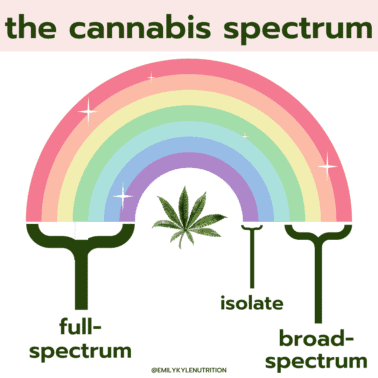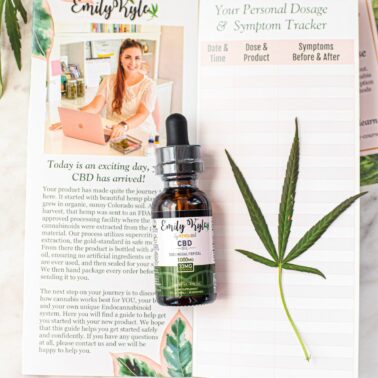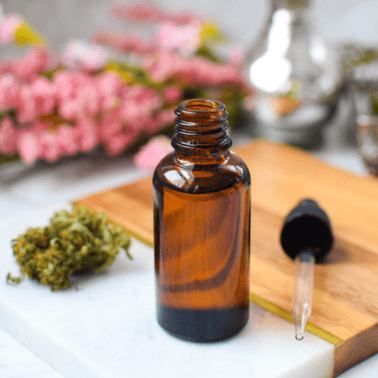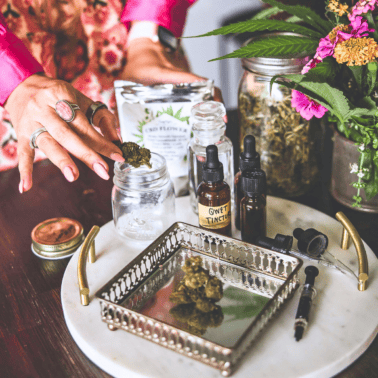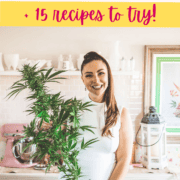Do you have a bottle of CBD oil and wonder what the heck to do with it? Learn more about how to cook with CBD oil to create delicious and nutritious recipes that can help you naturally enhance your health and wellness.

Table of Contents
- Article Features
- Why You Will Love This Guide
- Delicious Recipes To Try
- Important Things to Know
- Hemp Oil vs. CBD Oil
- What Does CBD Taste Like?
- Understanding Edibles
- Why CBD Loves Fat
- Temperature Considerations
- Working With Different Products
- CBD Oil vs. CBD Concentrate
- Frequently Asked Questions
- More CBD Articles You Will Love
Article Features
- A simple guide showing you how to cook with CBD oil
- Options for cooking, baking, and infusing all of your favorite recipes
- Want to make it easy? Have my premium CBD products delivered directly to your door – now shipping across the US!
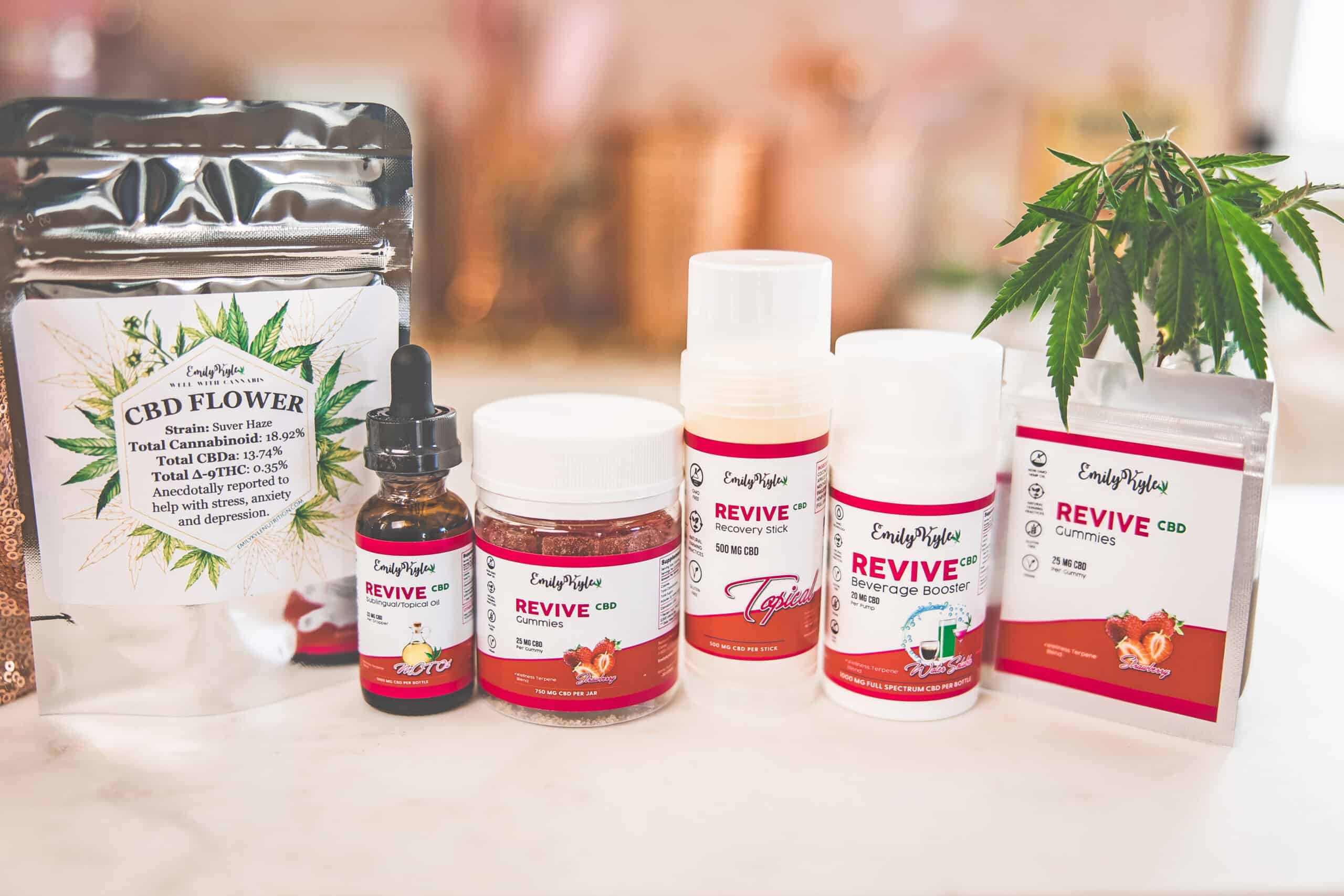
Why You Will Love This Guide
Hemp oil and CBD products have become so popular that they’re now considered mainstream health products.
Their most notable therapeutic value is as an anti-inflammatory.
Cooking with CBD oil can be an enjoyable, safe, and legal way to consume cannabis, but there are a few essential tips and tricks before making delicious CBD-infused recipes!
In this guide, we will explore important considerations, including getting the right products and how to cook at home, and I will share delicious recipes to try.
🚀 Test Your Knowledge
Coming Soon!Delicious Recipes To Try
Now that you know the basics of cooking with CBD oil, it’s time to start cooking in the kitchen!
Here are some of my favorite recipes you can use with your CBD oil.
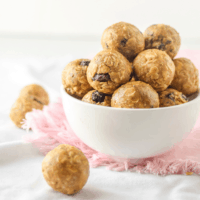
No-Bake Cannabis Energy Bites
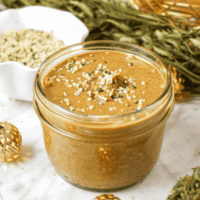
Cannabis-Infused Hemp Seed Butter
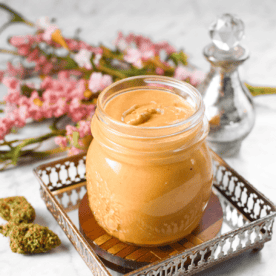
Easy Homemade Cannabis Peanut Butter
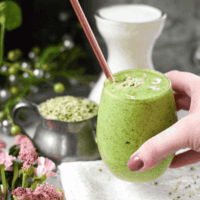
Tropical Green Cannabis Smoothie
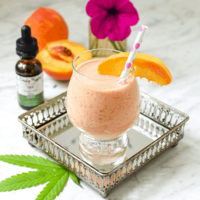
Raspberry Peach Cannabis-Infused Smoothie
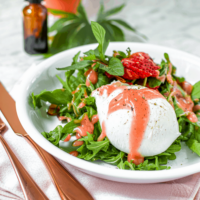
Cannabis-Infused Strawberry Vinaigrette with Burrata Salad
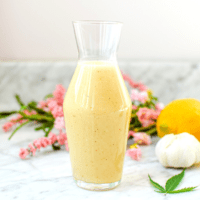
Zesty Cannabis Lemon Vinaigrette
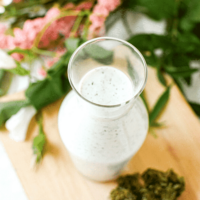
Homemade Cannabis Ranch Dressing
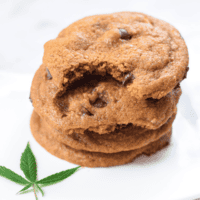
CBD Chocolate Chip Cookies
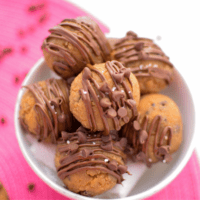
Cannabis Chocolate Chip Cookie Dough Bites
Important Things to Know
Are you ready to start cooking with CBD oil at home to make your delicious recipes?
Below, we will review the most important things you need to know.
Hemp Oil vs. CBD Oil
Let’s clarify before getting started and selecting a product to work with…
There is CBD in full-spectrum CBD oil but no CBD in hemp seed oil.
Hemp seeds come from cannabis but do not contain CBD; therefore, oil extracted from hemp seeds does not contain CBD.
Hemp flower buds and leaves contain CBD, so oil extracted from CBD flower buds will contain CBD.
While both CBD oil and hemp seed oil can be used in the kitchen, only CBD oil contains the medicinal benefits of CBD.
Hemp seed oil is important because it contains many nutritional benefits, including heart-healthy omega-3 fatty acids, which are also great for helping to reduce inflammation in the body.
Hemp seed oil is 100% legal and can be bought in almost any grocery store or online retailer.
Hemp seed oil can be used in various ways, most commonly as an alternative to olive oil in salad dressings and more.
A high-quality CBD oil is the product you want to start with when using CBD cannabis to manage the symptoms of anxiety, depression, and pain.
CBD is also legal to obtain and use in nearly every state, thanks to the passage of the 2018 Farm Bill.
What Does CBD Taste Like?
Cannabis has a distinct taste and flavor thanks to its unique terpene profile, and CBD oil is no different.
Terpenes are compounds that give all plants their unique smell and taste.
Terpenes can vary significantly from strain to strain, meaning each strain will have its unique taste and smell.
Furthermore, how the CBD is extracted from the plant and how much chlorophyll is extracted will also impact the final product taste.
You can choose an oil infusion with coconut oil or butter, an alcohol extraction like the Green Dragon or Golden Dragon, or make FECO.
Keep in mind that cannabis can be an acquired taste for some, and many find it to be a flavor that can greatly enhance the overall flavor profile of any dish.
Understanding Edibles
CBD can nourish the body’s endocannabinoid system, which is directly responsible for maintaining homeostasis or balance.
How CBD is consumed or applied will affect how easily the CBD is absorbed and how long the onset and duration times last.
CBD can be applied topically to the skin or taken sublingually under the tongue.
The edible consumption of CBD in the form of food and drinks is another popular way to enjoy CBD.
Remember that different CBD application methods will yield different experiences and results for each person.
Additional factors like body weight, health status, recent meals, and more can also affect your experience.
You may need to do some self-experimentation to find which dose and which application method works best for you.
Why CBD Loves Fat
CBD, like all cannabinoids, is lipophilic – meaning that it loves to cling to fat.
The cannabinoids are most easily and readily absorbed when paired with a fat, such as coconut oil or olive oil1.
This is why you will find most CBD recipes use these infused oils as the base.
Because CBD is a natural supplement, pairing it with a healthy diet is essential for the best health outcomes.
A diet full of processed and fried foods creates an imbalance in the body and the inability of your body to receive all the amazing benefits of CBD.
Remember, a healthy diet is a diet high in fruits, vegetables, whole grains, nuts, and seeds.
Temperature Considerations
CBD oil can be added to any of your favorite recipes.
A few CBD oil drops can be easily combined with salad dressings, smoothies, lattes, and much more!
CBD oil should not be overheated with direct heat to preserve these plant compounds.
Heating the oil too high can change its chemical composition, reducing its overall effectiveness2.
However, CBD can be heated up to about 240° Fahrenheit, making baking an appropriate way to use CBD while keeping all of its benefits.
And don’t worry, you can bake your brownies at 350° Fahrenheit; the brownies themselves will never get that hot.
Just sip the grilling, sauteeing, or microwaving of your CBD oil!
Remember that CBD oil does not need to be decarboxylated because it already has been.
The decarboxylation process happens while making it, so your CBD oil is already ready to be added to your favorite dish.
Working With Different Products
CBD oil can be found in three variations: full-spectrum, broad-spectrum, and isolate.
Understanding the difference before purchasing is essential to make the best decision possible.
Full Spectrum: Full-spectrum means that all of the naturally occurring cannabinoids found in the mature, growing plant are still present in the final processed product.
Full-spectrum products also contain the other essential compounds that the cannabis plant contains, including terpenes, flavonoids, and more.
Broad Spectrum: Broad-spectrum products contain many different kinds of cannabinoids and terpenes found within the plant, but not all of the compounds are naturally found within the plant.
Broad-spectrum CBD oil contains the same compounds as the full-spectrum oil; however, the THC has been physically separated, leaving no trace amounts.
Broad-Spectrum products are ideal for users who cannot have trace amounts of THC in their system, whether for a job, passing a drug test, or for personal reasons.
Isolate: Isolate products are specifically isolated cannabinoids that have been physically separated from the cannabis plant.
For example, CBD isolate is a 99.9% pure cannabidiol extraction.
During the CBD isolate extraction process, every compound in the plant matter is removed, including any traces of THC, terpenes, waxes, oils, chlorophyll, and more.
Full-spectrum cannabis is thought to be superior to broad-spectrum or isolated cannabis products because all constituents help create what’s known as The Entourage Effect.
CBD Oil vs. CBD Concentrate
The main difference between CBD oil vs. CBD concentrate is volume.
When something is concentrated, that means that it is denser, stronger, or purer by the removal or reduction of liquid.
You will find CBD oil sold in a much greater volume and directed to use a few drops per serving.
CBD concentrate will be sold in a much lesser volume and is typically used for making bath and body products, food preparation, baking, or even adding to your favorite refillable vape cartridge.
Check out these recipes that are perfect to use for CBD concentrate:
Frequently Asked Questions
No, but here is a guide that will show you how to smoke CBD safely.
Here is a complete guide on how to store CBD oil, so it doesn’t go bad.
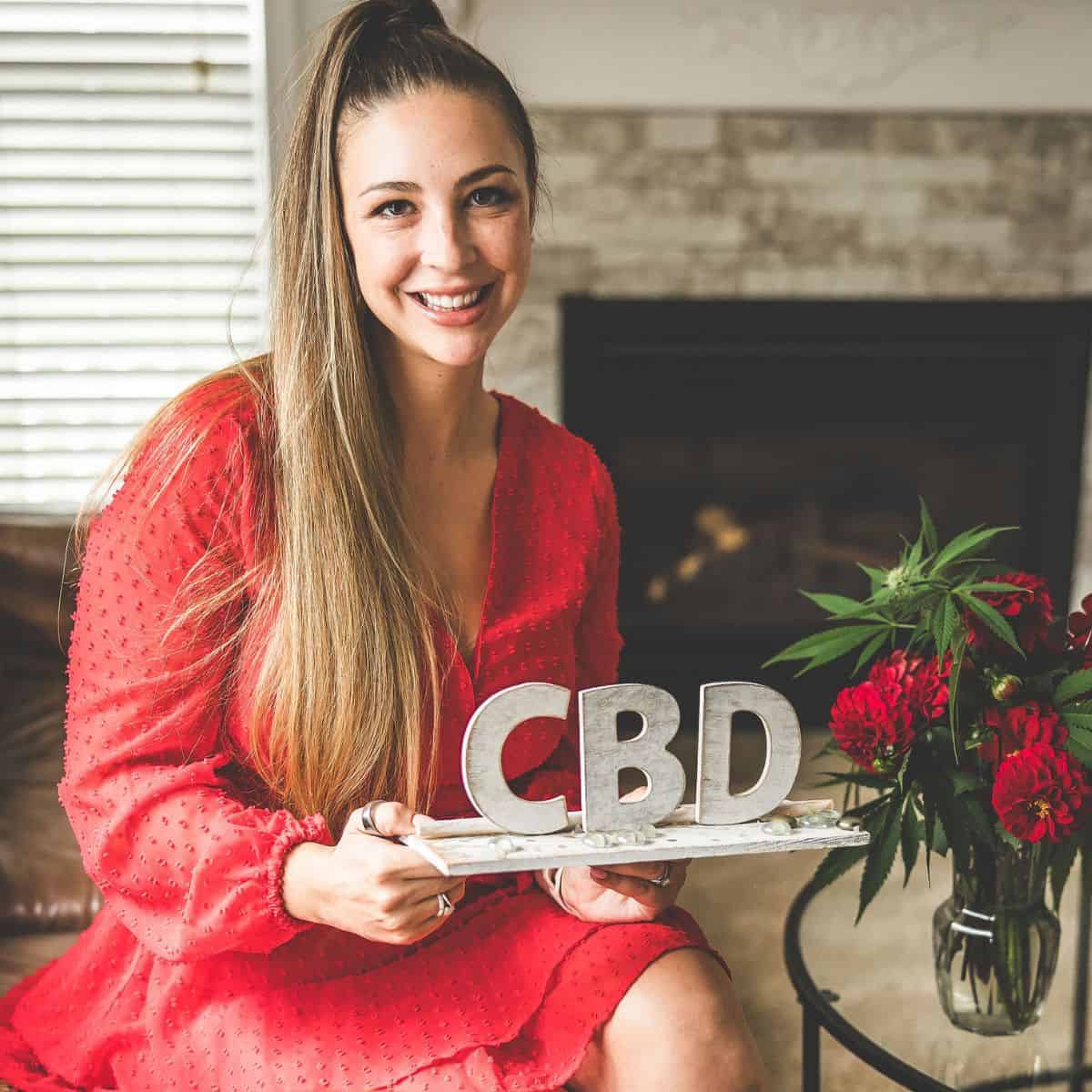
Unlock the Secrets of CBD in Just 5-Days…
Dive deep into how CBD and THC can enhance your wellness journey with my immersive 5-day “CBD, THC & Me” workshop. Get expert insights, personalized guidance, and practical advice to help you harness the potential of the plant.
More CBD Articles You Will Love
Articles & How-To Guides
Full-Spectrum vs. Broad-Spectrum CBD
Articles & How-To Guides
How to Choose A Safe CBD Product
CBD Guides & Recipes
CBD Oil vs. Hemp Oil » What’s the Difference?
CBD Guides & Recipes

